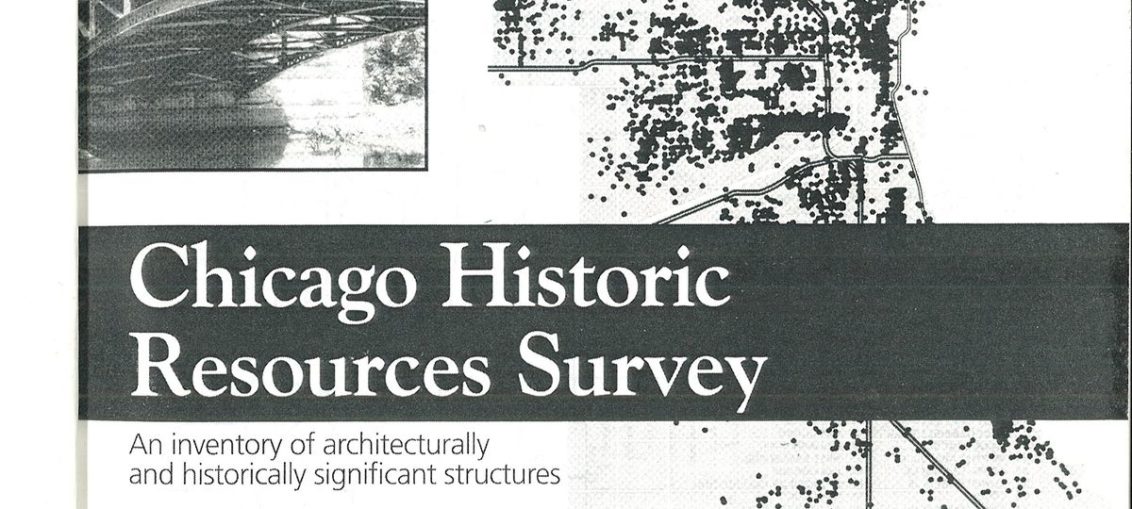
It was again in 1983, across the begin of the Harold Washington administration, that metropolis officers started the fieldwork on a long-term venture. They most likely didn’t notice precisely what that meant.
In the cubicles of presidency work, “long-term” can imply simply till the following election or till some controversy blows away. But this turned a labor of affection that concerned many individuals for greater than a decade. And on this season of counting our blessings, it’s price noting that what they produced turned an everlasting reward for Chicagoans, particularly anybody who has ever admired its structure or simply puzzled about an outdated constructing of their neighborhood, possibly their very own home.
It’s the Chicago Historic Resources Survey, uncommon in its time. It concerned eyeballing and categorizing each constructing on each block for its design or historic benefit. In the times earlier than Google Street View, that meant outfitting three staffers at a time with movie cameras, four-block-by-four-block part maps of the town from the Zoning Department and many markers.
The staffers, some new to their professions, cruised the town and categorized buildings by a color-coding system nonetheless used right now. In the early days, they piled into any individual’s Chevy Chevette, stated Jim Peters, who labored within the metropolis’s landmarks division for a couple of decade and right now is a lecturer on the School of the Art Institute of Chicago. “You made an initial judgment and colored in your choice on the maps. It was one place you could apply your training as a kindergartener and color within the lines,” Peters stated.
Charles Pipal, who did the fieldwork within the 1990s, stated the driving force took the left facet and the passenger the proper facet of the road, calling out observations to the individual within the rear. “The conversations went something like this. ‘Green. Green. Yellow. Blue. Orange,’” he stated. In the town’s scheme, “red” and “orange” buildings have the best significance and couldn’t be torn down with no struggle. Other colours denote buildings too altered for preservation functions. “Blue” is for buildings principally after World War II which are too new for consideration.
But the fieldwork, accomplished in 1995, was simply a part of the job. Staffers dug into constructing permits and different historic sources to confirm or appropriate their avenue observations. They collected details about neighborhoods and architectural kinds. In 1996, Peters and others have been prepared with a e book that was distributed to libraries.
 Jim Peters, lecturer on the School of the Art Institute of ChicagoSchool of the Art Institute of Chicago
Jim Peters, lecturer on the School of the Art Institute of ChicagoSchool of the Art Institute of Chicago
The finish product included notations on greater than 17,000 buildings — many with the architect, date of development, the model and the historic use. The data was later digitized and may now be searched on-line.
Time has handed and lots of entries are old-fashioned. But the survey stays a necessary first cease for anybody in search of background a couple of property or a neighborhood with historic character. It additionally added to the information base of planners at City Hall, which led to revisions in a nifty booklet known as “Your House has a History.” It’s a information to the library collections, neighborhood historic societies and different sources for details about outdated properties. The direct hyperlink to it appears to have vanished from the town’s web site, however you’ll discover the .pdf should you seek for the title on Google.
The Chicago Historic Resources Survey continues to be obtainable in print, however the group Preservation Chicago has posted it on its web site. Be affected person, although, as a result of the file can take a very long time to load.
Over the years, builders and their legal professionals chafed on the metropolis’s coloration rankings. Why, of their view, ought to they should justify a demolition as a result of any individual recent out of college years in the past known as their constructing “orange?” The system was imperfect, but it surely acknowledged and prioritized…